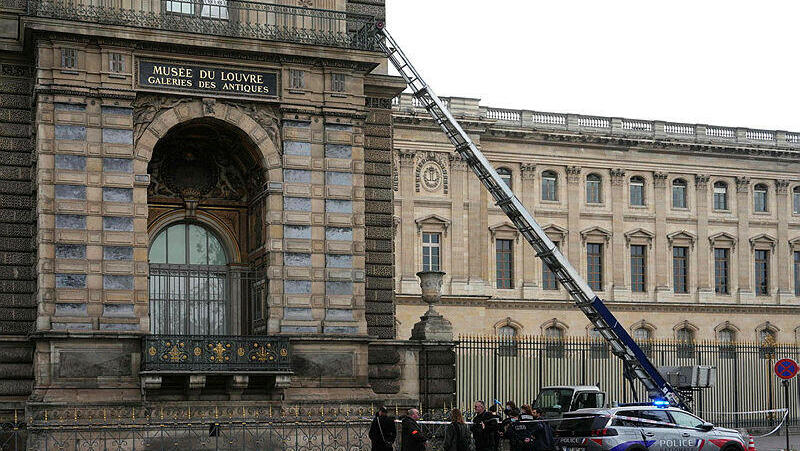
France turns to Israeli security firm after daring Louvre heist
Authorities enlist ex–Shin Bet chief’s CGI Group amid fears of inside links and cover-up in the Paris museum robbery.
When thieves in balaclavas smashed a window of the Louvre with a crane on Sunday morning, storming into the Galerie d’Apollon to seize pieces from France’s royal collection, it seemed an audacious strike even by Paris standards. But as the world’s most-visited museum reckons with the theft of priceless jewels under the gaze of shocked tourists, French investigators are turning abroad for help, signaling deep concern not only over the stolen treasures, but over who might have allowed it to happen.
The French authorities, keen to avoid any suspicion of bias or conflicts of interest, brought in external help almost immediately after the robbery. As in previous high-profile cases, they sought an international firm to guarantee transparency and independence in the investigation. One of the companies assisting is CGI Group, owned by former Shin Bet chief Yaakov Peri, which gained international recognition for helping solve the Dresden Green Vault burglary, where jewelry and diamonds worth €113 million were stolen from a German museum.
The Louvre theft unfolded with cinematic precision. At around 9:30 a.m., just after the museum had opened its doors, four unarmed men climbed a crane to an upper floor, broke through a window, and entered the gilded Galerie d’Apollon, which houses France’s crown jewels. They threatened security guards with angle grinders, seized nine objects, eight of which they escaped with, and fled on motorcycles through the streets of central Paris.
Among the stolen pieces: a crown belonging to Empress Eugénie, wife of Napoleon III, which fell during the getaway and was later recovered. “That crown alone is worth several tens of millions of euros,” said Alexandre Giquello, president of the Drouot auction house. “And it’s not, in my opinion, the most important item.”
The robbers notably ignored the Regent diamond, one of the most famous gems in the world, valued by Sotheby’s at over $60 million. “I don’t have an explanation,” admitted Paris Prosecutor Laure Beccuau. “Only once they are in custody will we understand what kind of order they had, and why they didn’t take that window.”
Investigators found a yellow reflective vest left behind at the scene and said the thieves had tried, unsuccessfully, to torch the crane as they fled.
While the prosecutor emphasized that foreign interference was not among the main hypotheses, the scale and speed of the operation point to a professional, organized network. “Nowadays, anything can be linked to drug trafficking, given the significant sums of money obtained from it,” Beccuau said, suggesting that the jewels might serve as instruments to launder illicit profits.
Related articles:
Yet the decision to call in CGI hints at deeper unease, perhaps not only about organized crime, but about the reliability of local enforcement.
Culture Minister Rachida Dati acknowledged the broader problem: “For forty years, there was little focus on securing these major museums… Today it’s organized crime, professionals. Museums must adapt to new forms of crime.”
President Emmanuel Macron, calling the theft “an attack on a heritage that we cherish because it is our History,” vowed to recover the stolen works and bring the perpetrators to justice.
Reuters contributed to this report.